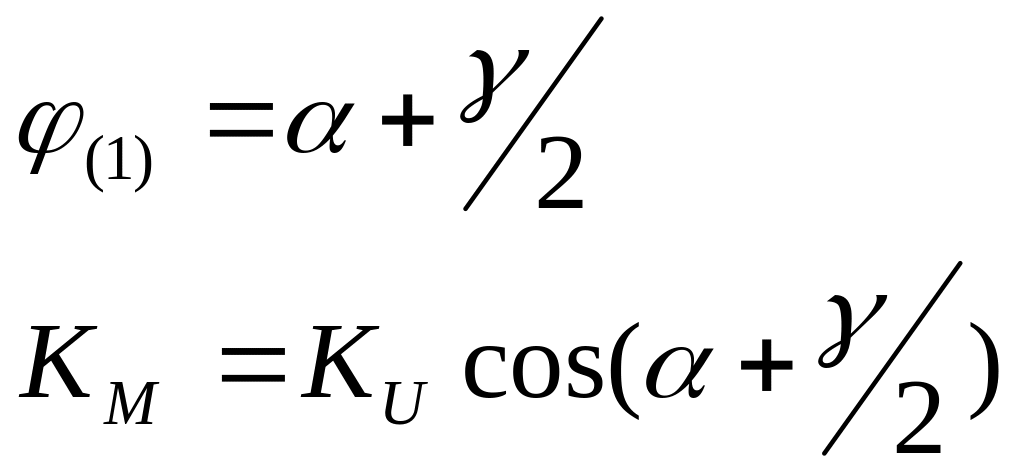
- •Introduction
- •1. Rectifiers
- •1.1 Employment, basic constituents
- •1.2. Technical and economic indexes of rectifier
- •1.3. Classification of rectifiers
- •1.4 Calculated basic parameters of designing
- •1.5 Some definitions
- •Thyristor as logical switch
- •1.7 A single-phase half-wave rectifier
- •1.7.1 Operation of single-phase half-wave rectifier with active load
- •For a secondary winding
- •For a primary winding
- •1.7.2. Operation of the half-wave rectifier with active - inductive load and limited inductance
- •1.7.3. Operation of the half-wave rectifier with resistive-capacitive load
- •1.8. A single-phase full-wave rectifier with a centre tap
- •1.8.1. Operation of a full-wave rectifier with a centre tap with an active load
- •1.7.2. Operation of a full-wave rectifier with centre tap and active - inductive load and limitеd inductance
- •1.8.3. Operation of a full-wave rectifier with centre tap and active - inductive load with infinite inductance
- •1.8.4. Consideration of a stage of switching of thyristors for a full-wave rectifier with centre tap and active - inductive load with infinite inductance
- •1.8.5 An external characteristic in per unit values
- •1 .9 A single-phase bridge rectifier
- •Figure 1.18
- •From cathode group thyristors current is flowing through that the right one witch have anode voltage greater than other one.
- •From anode group thyristors current is flowing through that the right one witch have cathode voltage less than other one.
- •1.10 The three-phase rectifier with a centre tap
- •1.10.3 The controlled three-phase circuit with a centre tap
- •1.10.4 The account of a stage of switching for three phase rectifier with centre tap
- •1.10.5 External characteristic
- •1.11 Three-phase bridge rectifier
- •The external characteristic
- •1.12 The double three-phase rectifier with balancing reactor
- •1.12.2. Definition of parameters for a choice of thyristors, calculation of the transformer and the balancing reactor
- •1.12.3 Merits and demerits, conditions of application
- •1.13 Equivalent polyphase circuits
- •1.13.2. Parallel connection of double three-phase bridge rectifiers
- •Average value of the rectified voltage is
- •1.14 Operation of the rectifier with opposite- emf
- •1.14.1. Operation of the half-wave rectifier with center tap with opposite- emf and active load
- •1.14.2. Operation of the half-wave rectifier with center tap and opposite-emf and active-inductive load
- •2. Dependent inverters
- •2.1 Transition from a rectifying conditions to an inverting conditions
- •External characteristics
- •3. Equipment and characteristics
- •3.1 Transformers for converting sets
- •3.2 The higher harmonics of a current and a voltage
- •The higher harmonics in a curve of the rectified voltage
- •3.2.3 The higher harmonics in a curve of a prime current
- •3.3. Power characteristics of the converter
- •3.3.1. Efficiency
- •3.3.2 Power factor
3.3.2 Power factor
Let's consider that primary voltage U1 is not distorted, since capacity of a supply network is much more than the converter one.
i1
i1(1)
Id
2π
π
U1
γ/2
γ
α

















Figure 3.3
Then power factor we shall determine as

where P1=3U1PhI1(1)cosφ(1) - the active input power transmitted to the converter by supply-circuit;
S1=3U1I1 - a full input power transmitted to the converter by supply-circuit;
I1(1) – rms value of first harmonic of a primary current of the transformer;
φ(1) - a shift angle of primary current concerning a mains voltage.
Reactive input power by the converter is
![]()
Full power transmitted by a network is
![]()
![]()
where Т - distortion power.
Distortion factor is
 ,
,
Therefore always
![]() .
.
φ(1) increases with hence Q1 increases too and P1 decreases. This is a reason of variation a mains voltage. As a primary current curve is distorted the highest harmonics of primary current create a voltage drop on reactances of supply system and main voltage may be distorted. Distortion power T is not only useless but it creates additional load for power system lines and consumer’s equipment.
For dependent inverters
is greater than /2
and Р1
is less than 0
but for accounts Р1>0
and
![]() are considered.
are considered.
Always there is χ < 1.
ν increases with a number of phases of the rectifier, with a load, with γ and with ха .
Some methods of increase χ :
- The artificial commutation of thyristors is applied to increase cosφ(1). It is commutation of thyristors before natural commutation by way inclusion in a switching contour of additional sources of EMF.
- Inclusion of additional thyristors with the purpose of a current cutoff flowing when voltage across the load is negative.
- Asymmetrical controlling;
- For improvement ν use also equivalent multiphase circuits.
